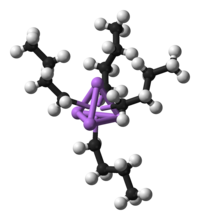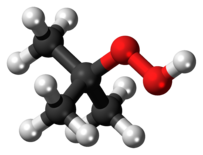n-Butyllithium-Hazard and Toxicity
Sep 6,2019
Description
n-Butyllithium (abbreviated n-BuLi) is an organolithium reagent. It is widely used as a polymerization initiator in the production of elastomers such as polybutadiene or styrene-butadiene-styrene (SBS). Also, it is broadly employed as a strong base (superbase) in the synthesis of organic compounds as in the pharmaceutical industry.

Toxicity Data
There is little toxicity data available for the butyllithiums; for data on ether and hydrocarbon solvents, see the appropriate LCSSs.
Hazard
Highly reactive; violent reactions may occur on exposure to water, CO2 and other materials; may ignite spontaneously on exposure to air; highly corrosive to the skin and eyes.
Toxicity
Solutions of the butyllithiums are corrosive to the skin, eyes, and mucous membranes. Reaction with water generates highly corrosive lithium alkoxides and lithium hydroxide.
Reactivity
The butyllithiums are extremely reactive organometallic compounds. Violent explosions occur on contact with water with ignition of the solvent and of the butane produced. t-Butyllithium will ignite spontaneously in air. The butyllithiums ignite on contact with water, carbon dioxide, and halogenated hydrocarbons. The butyllithiums are incompatible with acids, halogenated hydrocarbons, alcohols, and many other classes of organic compounds.
Storage
Butyllithium solutions should be handled in the laboratory using the "basic prudent practices". In particular, butyllithium should be stored and handled in areas free of ignition sources, and containers of butyllithium should be stored under an inert atmosphere. Work with butyllithium should be conducted in a fume hood under an inert gas such as nitrogen or argon. Safety glasses, impermeable gloves, and a fire-retardant laboratory coat are required.
Accidents
In the event of skin contact, immediately wash with soap and water and remove contaminated clothing. In case of eye contact, promptly wash with copious amounts of water for 15 min (lifting upper and lower lids occasionally) and obtain medical attention. If butyllithium solution is ingested, obtain medical attention immediately. If large amounts of butyllithium solution are inhaled, move the person to fresh air and seek medical attention at once.
In the event of a spill, remove all ignition sources, and allow the butyllithium to react with atmospheric moisture. Carefully treat the residue with water, soak up with a spill pillow or absorbent material, place in an appropriate container, and dispose of properly. Respiratory protection may be necessary in the event of a large spill or release in a confined area.
Disposal
Excess butyllithium solution can be destroyed by dilution with hydrocarbon solvent to a concentration of approximately 5 wt %, followed by gradual addition to water with vigorous stirring under an inert atmosphere. Alternatively, the butyllithium solution can be slowly poured (transfer by cannula for s- or tbutyllithium) into a plastic tub or other container of powdered dry ice.
- Related articles
- Related Qustion
- Mechanism of the Deprotonation Reaction of Alkyl Benzyl Ethers with n-Butyllithium Apr 22, 2024
n-Butyllithium is an organolithium reagent, a good nucleophile and a strong base (pKa ~ 48). n-Butyllithium is a good nucleophile and a strong base (pKa ~ 48).
- n-Butyllithium: A Comprehensive Review of Properties, Praparation and Reactions May 11, 2023
The chemical compound n-butyllithium (abbreviated BuLi) is the most prominent organolithium reagent.
tert-Butyl hydroperoxide (tBuOOH) is an organic peroxide widely used in a variety of oxidation processes, for example Sharpless epoxidation.[3] It is normally supplied as a 69–70% aqueous solution.....
Sep 6,2019Organic ChemistryHydrogen,H2, is a tasteless,colorless, odorless gas that may be liquified by cooling under pressure. Hydrogen is used in welding, in the production of ammonia, methanol, and other chemicals, for the hydrogenation of oil and coal,and for the....
Sep 9,2019Inorganic chemistryn-Butyllithium
109-72-8You may like
- n-Butyllithium
-

- $1.00 / 1KG
- 2025-12-11
- CAS:109-72-8
- Min. Order: 1KG
- Purity: 99%
- Supply Ability: 10 mt
- n-Butyllithium
-

- $50.00 / 1KG
- 2025-09-25
- CAS:109-72-8
- Min. Order: 1KG
- Purity: 99%
- Supply Ability: g-kg-tons, free sample is available
- N-Butyllithium
-

- $9.00 / 1ASSAYS
- 2025-05-26
- CAS:109-72-8
- Min. Order: 1ASSAYS
- Purity: 99%
- Supply Ability: 10000kg






